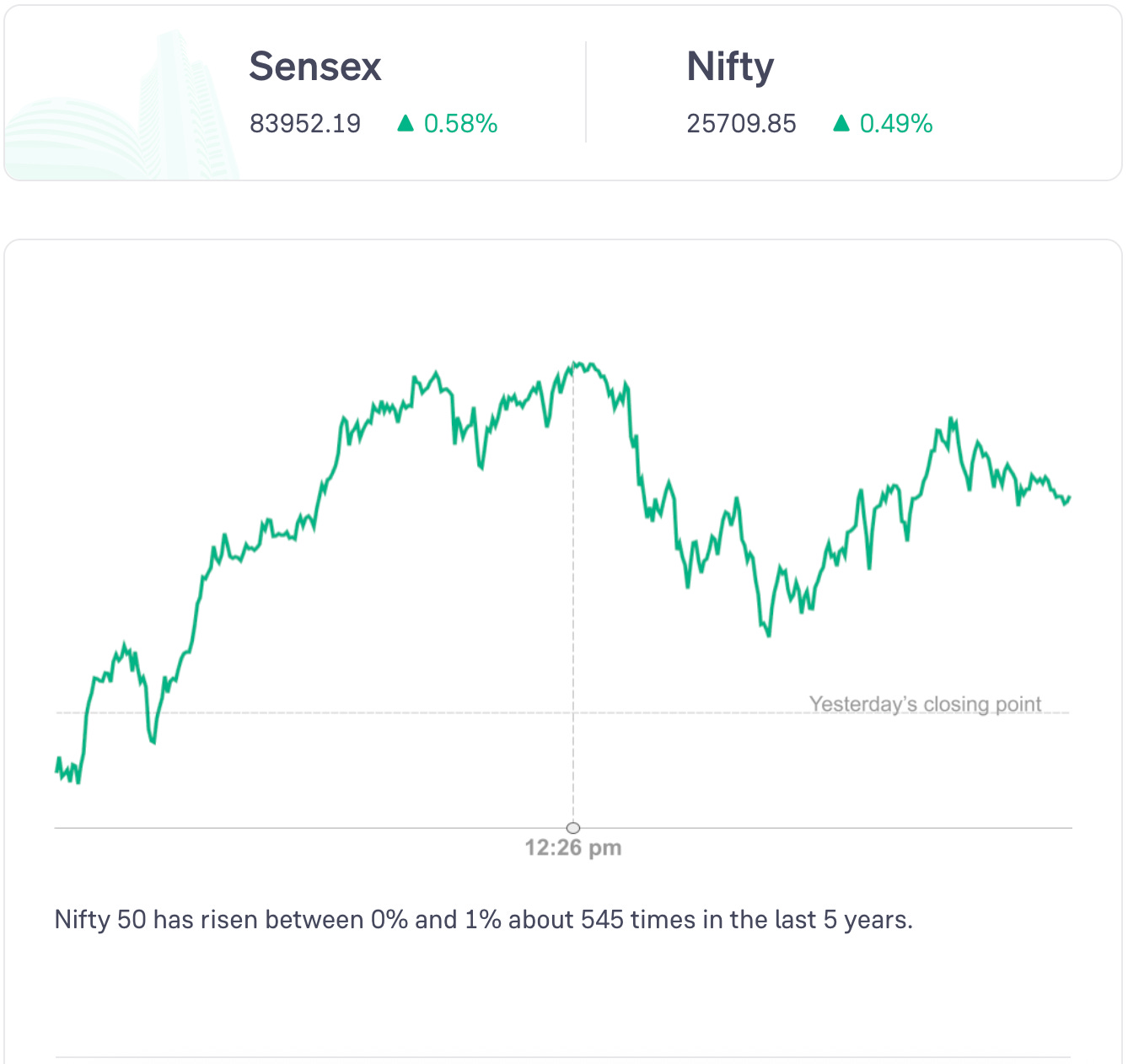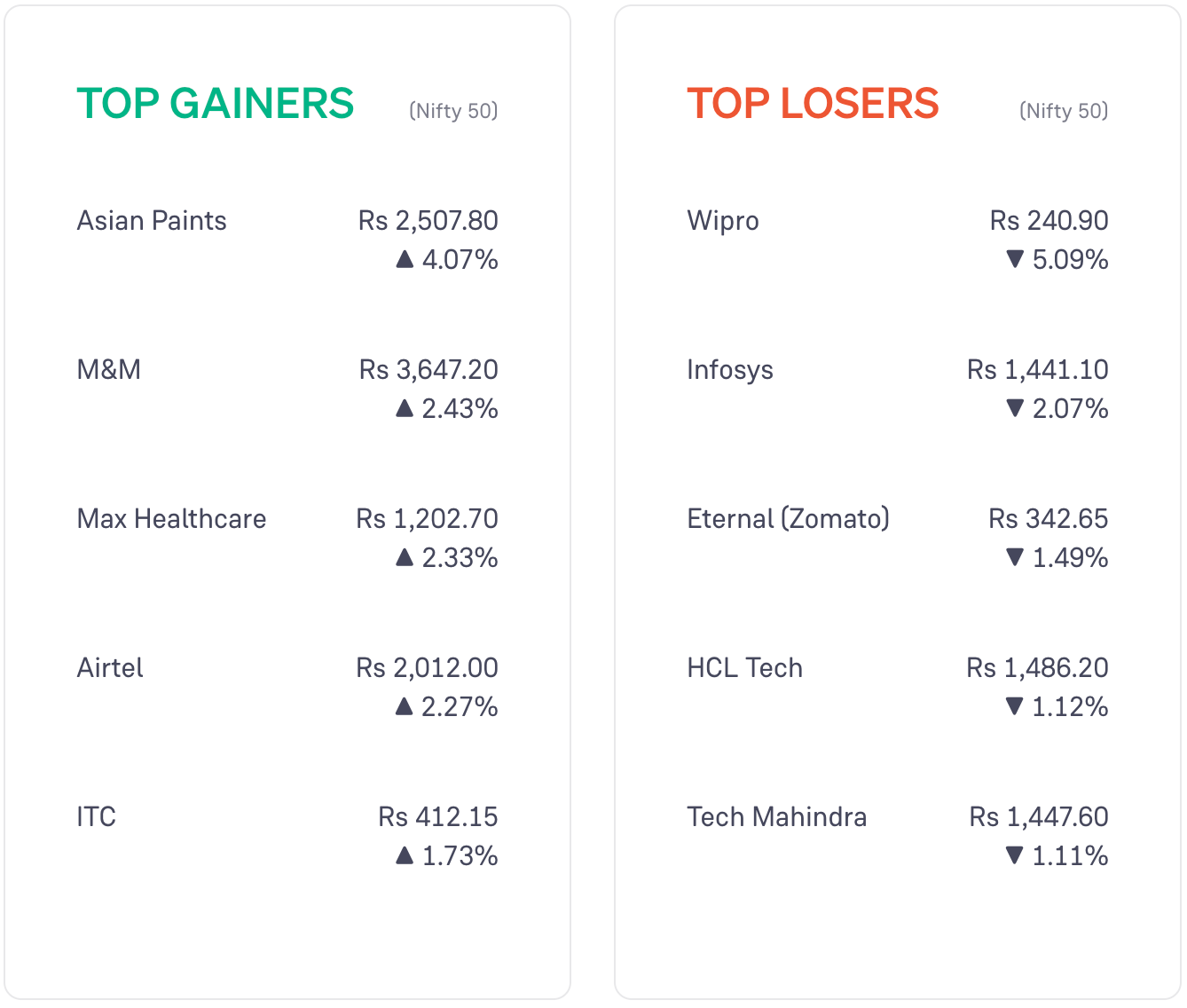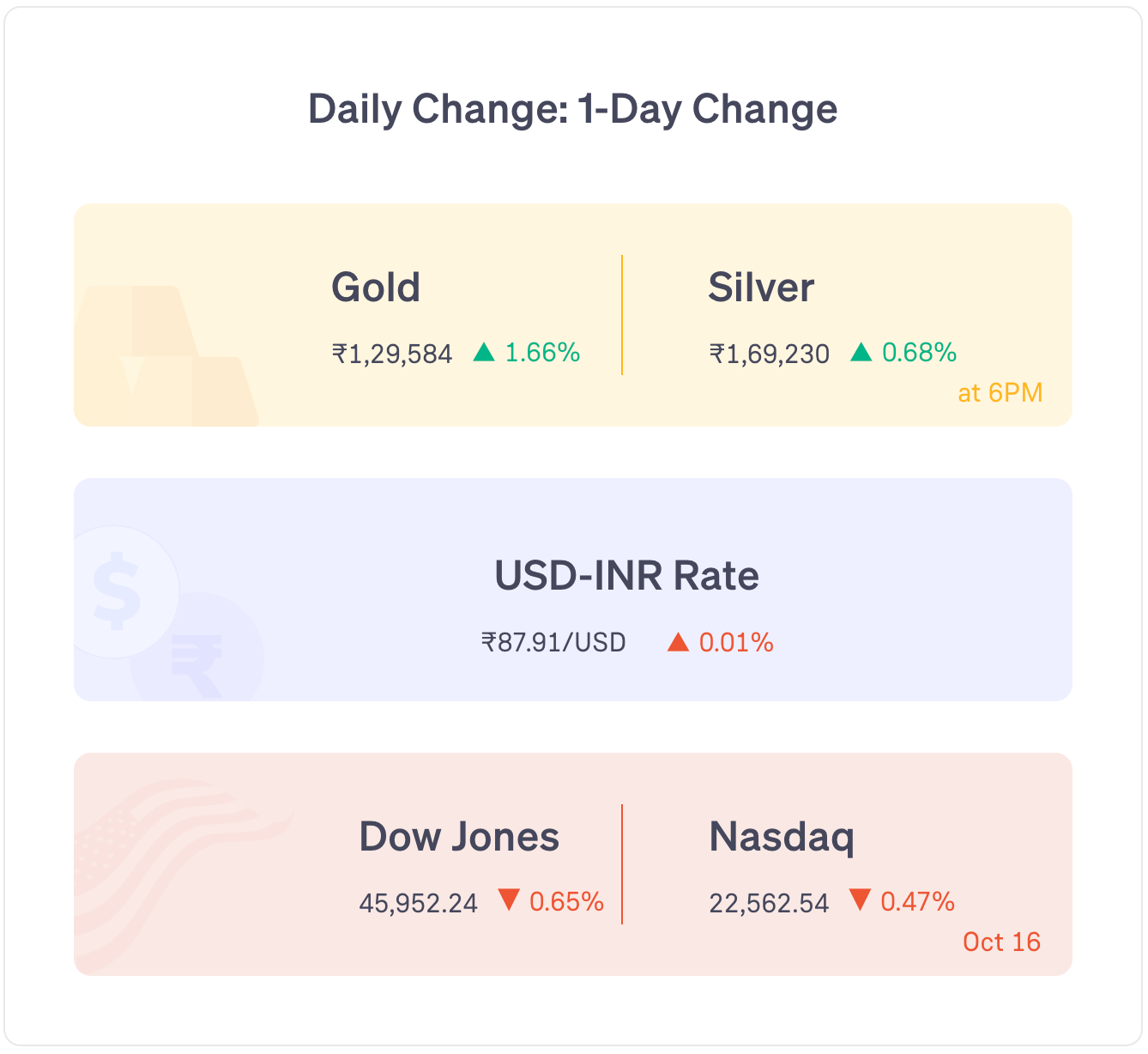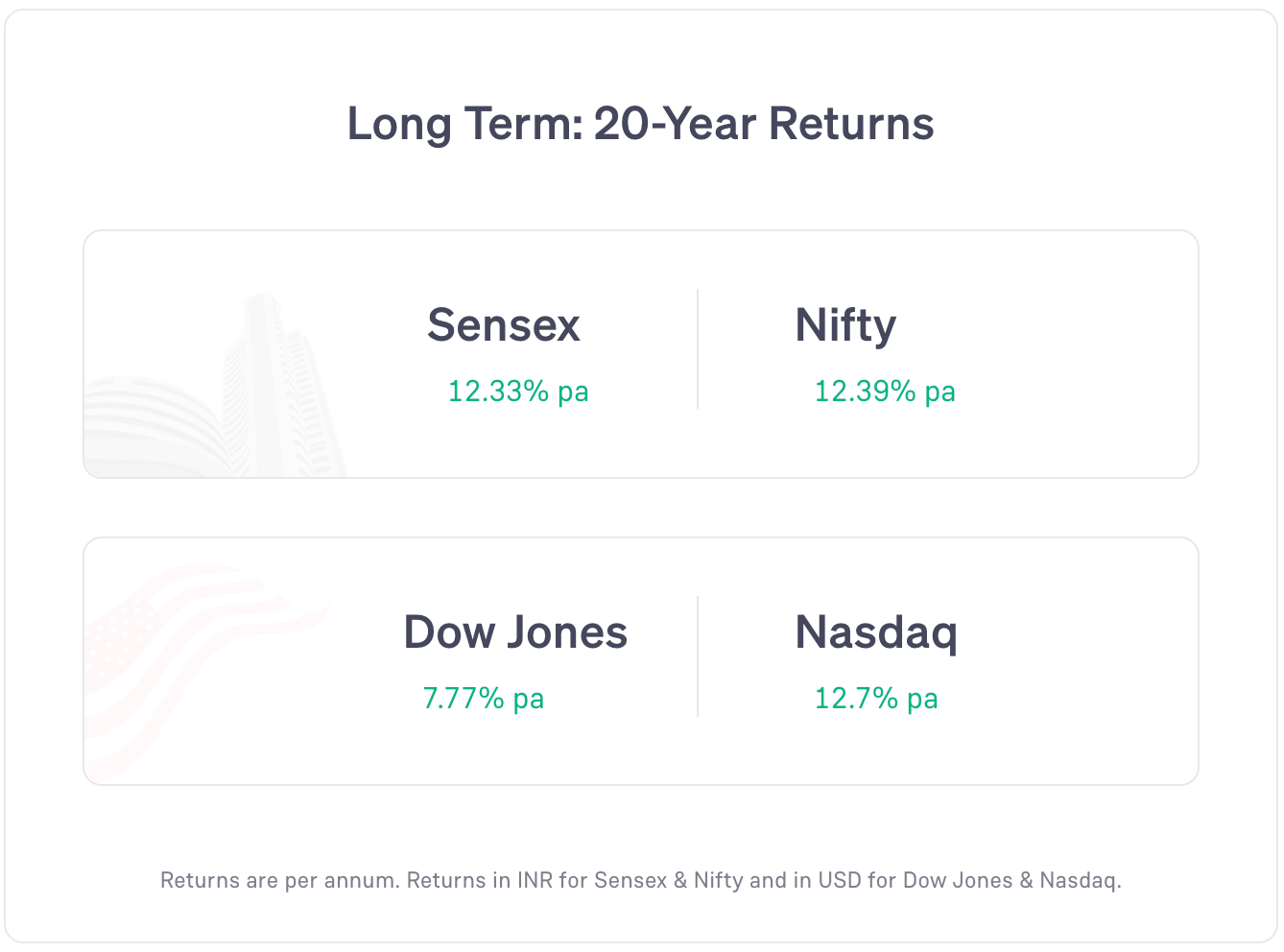JSW Steel profits up 270%, REC's Rs 4.60 dividend, & more - Groww Digest
Friday, 17 October 2025
Markets opened below yesterday’s closing point.
Nifty 50 rose in the first half of the day and closed in the green.
FMCG stocks and healthcare stocks rose the most today. IT stocks and media stocks fell the most.
Global markets: US markets and most Asian markets fell. Most European markets fell (as of 6 pm IST).
News
India’s forex reserves fell $2.18 billion to $697.78 billion in the week that ended on 10th Oct.
The Euro Area’s inflation rose to 2.2% year-on-year in Sept (vs 2% in Aug).
Canara HSBC Life Insurance IPO was listed flat on the stock exchanges and closed 5.11% up at the end of the day.
Stocks Updates
JSW Steel: net profit rose 270% year-on-year to Rs 1,623 crore in the July-Sept quarter. The company also approved the merger of its wholly owned subsidiaries, Amba River Coke, Monnet Cement, and JSW Retail & Distribution, into itself. It will also reorganize its US operations by consolidating all entities under a single holding company in the US.
REC: net profit rose 9% year-on-year to Rs 4,415 crore in the July-Sept quarter. Dividend declared: Rs 4.60 per share; record date: 27 Oct.
SBI: raised Rs 7,500 crore via non-convertible debentures with a coupon rate of 6.93%, with a tenure of 10 years.
Hindustan Zinc: net profit rose 14% year-on-year to Rs 2,649 crore in the July-Sept quarter.
Polycab: net profit rose 56% year-on-year to Rs 686 crore in the July-Sept quarter.
Dixon Tech: net profit rose 72% year-on-year to Rs 670 crore in the July-Sept quarter.
JSW Energy: net profit fell 17% year-on-year to Rs 705 crore in the July-Sept quarter.
Havells India: net profit rose 19% year-on-year to Rs 319 crore in the July-Sept quarter.
Word of the Day
Emerging Market Fund
It shows how much profit a company makes from its sales after paying all expenses
It is a fund that invests in stocks or bonds of companies in developing countries
Example: Companies in India, Brazil, China, etc.
These countries have markets with a high potential for growth as their economies are also developing rapidly.
Since developing economies often grow faster than developed ones, they can offer higher returns. But they also carry higher risk.
The fund is spread across different countries for diversification.
6 Day Course
Theme: importance of timing in mutual funds
Day 5: Friday
Lastly, let’s talk about sectoral funds and thematic funds.
These mutual funds invest in stocks from a certain sector/industry or match a certain theme.
Example: pharma funds, infrastructure funds, logistics funds, etc.
In this case, when you invest and when you withdraw is extremely important.
In most other mutual funds, investing for the long term is the best policy.
But in sectoral and thematic funds, investors must research the sectors and underlying factors well before investing.
Many sectors perform well continuously. Many sectors go through cycles where they rise and fall. And many sectors can get a sudden boost or shock from factors like government policy, customer preferences, etc.
Example: consumer goods sector has been rising consistently. IT stocks are going through a phase of correction right now. Media stocks have underperformed for many years, etc.
Features Question
Q. “I’m concerned that the fund size of my mutual fund investment has remained the same for the past 2-3 months. Does this mean the fund house has stopped investing in new assets? If so, how am I still seeing changes in the NAV? What’s the typical frequency of updates to the fund size and NAV?”Fund size is also called AUM or Assets Under Management.
What is AUM?
It is the total value of the holdings of a mutual fund.
It increases or decreases when:
1. The value of the assets rise/fall
2. Investors invest/withdraw more money
So,
+ If the value of shares is not moving up (markets are flat) AND more investors are not investing = AUM will remain unchanged.
+ If the value of shares is not moving up (markets are flat) AND more investors are investing = AUM will increase.
+ If the value of shares is moving up (markets are good) AND more investors are investing = AUM will increase more.
Investors need not track the increase in AUM that closely.
Why?
There’s no reason to track how other investors are investing in the mutual fund.
It is better for investors to track the NAV. Or even better, the returns that you are getting specifically.
Over shorter periods like 2-3 months, mutual fund returns can be flat, or even lower. The same applies to the AUM.
That’s normal with equity mutual funds.
If they perform poorly over long durations (2-4 years), then an investor can consider changing.
Did you like this edition?
Leave a feedback here!





